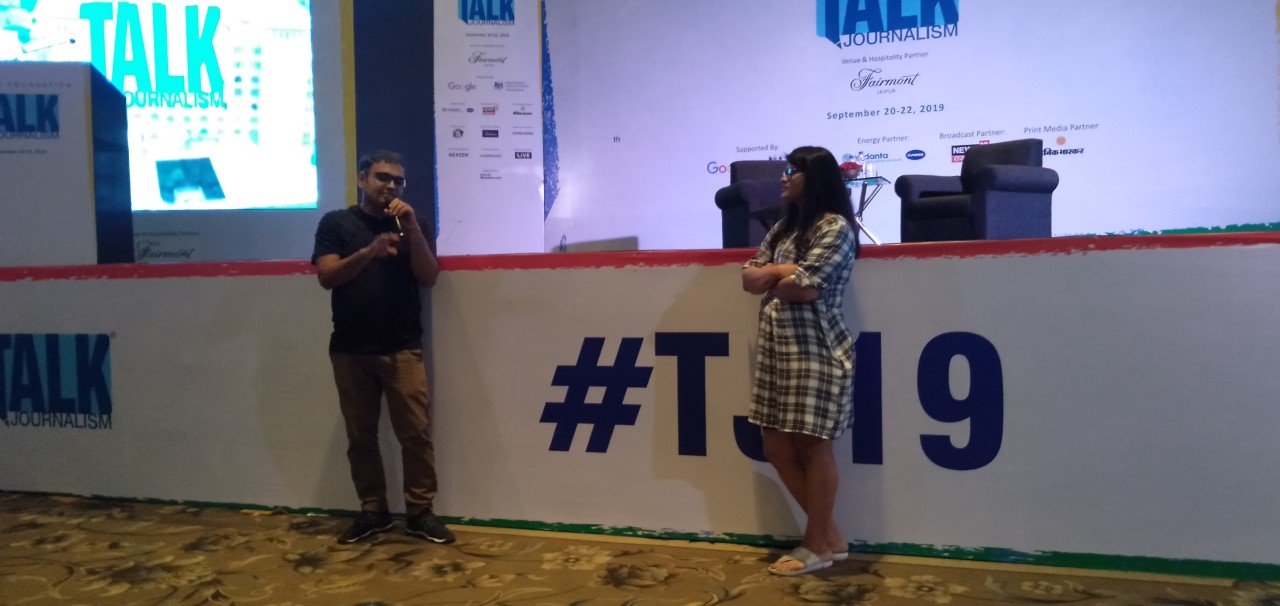Jaipur, 21 September, 2019 – All of us know about Kota Factory but are we aware of the ground reality? Recently I watched Chhichhore in which the hostel memories was the funniest and attractive part of the film. Then I saw ‘An Engineered Dream’ which changed my perspective about the lives of those who stay far away from their hometown. I was aware of the problems of these students but I never felt bad for them. On the other hand, I also judged them because of the students’ thinking process. Fictionalized films seem fun but the reality is a bit dark. Let’s take a look towards the other side of the coin.
Every documentary teaches you something, similarly, this documentary enlightens you about the lives of those who are in the process of pursuing Engineering. The documentary not only gives you an insight into the lives of the students but also emphasizes the varied mindsets presented to us by both students and their parents. I would like to term this documentary ‘An anatomy of a person who is preparing for the Entrance Exam.” Before I talk about the Documentary, I would like to talk about the director – Hemant Gaba, a freelancer who has directed five films in total. This one is especially close to his heart because once upon a time, he was pursuing Engineering from the Punjab Technical University but later realized his interest lies in films. He attended a few workshops and slowly switched his profession from an Engineer to an Independent Film-maker.
The narrative of the documentary is simple yet very effective. The documentary starts with an event addressed by Sri Sri Ravi Shankar where a huge crowd of students gather to seek solutions for their psychological problems. As the plot moves further, you witness the struggles faced by students right from settling in hostels, getting used to the atmosphere of coaching classes, connecting with new people, preparing for exams, applying for JEE, getting results of the same and then applying for JEE Advance and ultimately getting results which ends with either celebrating victory or mourning failure.
The limelight was on Suraj who ranked 5th in All India Rankings (AIR). However, the most fascinating part of the film was his parents as they were the ones who pulled the strings of Suraj’s life. He was a child who used to follow his parents blindly. Even though he secured 5th rank in AIR, his parents were not satisfied. There were some students who were full of enthusiasm at first but with time, they lost all hopes. This often happens when you try multiple times yet do not succeed. There was a student who vlogs about his typical day and the fun part about it was the way he studied. Whenever he got distracted, he punished himself by punching the wall. In the process, he also spoke about the suicidal thoughts he had. The darkest part of the vlog was the way he appealed Donald Trump to start World War three only so that he can avoid his exams. There were many more students who were interviewed and were facing a similar situation.
There were various elements which amazed me. I would love to share some of them. ‘Study, eat, sleep, repeat’ was one of the quotes stuck on the canteen walls.
There was a part in which students were visiting temples before their entrance exams. The walls of the temple were used as a prayer board.
One of the most horrifying parts of the documentary was the scene where a few messages etched on the doors of the dorm were displayed. ‘Do not disturb’, ‘Don’t dare to enter’, ‘Enter if you want eternal peace’ and ‘I am dead’ were some of the few.
Hemant was very successful in showcasing a roller coaster of emotions throughout the film. As an audience, one would definitely feel the tension of these children and their parents. I literally got back to the time when I appeared for my SYJC examination. The turning point of the documentary was obviously the time when he showed people celebrating their success. It will surely break your heart when you see the next frame, in which the grieve of those who have failed was projected.
There were a few things through which the content could have been more interactive and engaging. I was upset about the fact that only the perspectives of the students and the parents were considered. It could have been more engaging if a few heads of coaching classes and representatives of the education system would have been interviewed. Also, the experiences of students passed out of Kota would have been a cherry on the cake. At some point, the content seemed repetitive and some of it could have been cropped out.
Overall, I think one must watch this documentary as it touches upon the ground reality of Kota’s Education System. Visuals played a key role in the success of the film. You can also say that the series ‘Kota Factory’ curated by TVF is the fictional version of this documentary.
The documentary was screened on the second day of Talk Journalism 2019 on Saturday. The session ended with the speaker taking questions from the audience.
Text: Gunjan Punwani | Copy Edit: Rupali Soni | Photo: Gunjan Punwani | Photo Desk: Sagar Samuel | Editorial Coordination: Rupali Soni & Niharika Raina


